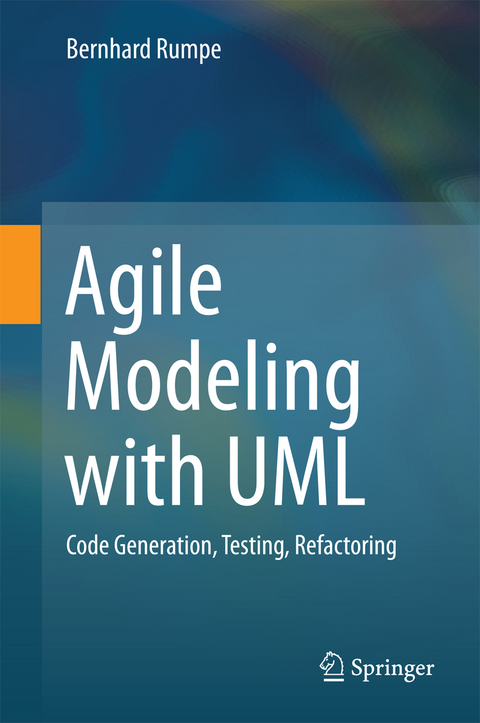
Agile Modeling with UML
Springer International Publishing (Verlag)
978-3-319-58861-2 (ISBN)
After an introduction to the book and its primary goals in Chapter 1, Chapter 2 outlines an agile UML-based approach using UML/P as the primary development language for creating executable models, generating code from the models, designing test cases, and planning iterative evolution through refactoring. In the interest of completeness, Chapter 3provides a brief summary of UML/P, which is used throughout the book. Next, Chapters 4 and 5 discuss core techniques for code generation, addressing the architecture of a code generator and methods for controlling it, as well as the suitability of UML/P notations for test or product code. Chapters 6 and 7 then discuss general concepts for testing software as well as the special features which arise due to the use of UML/P. Chapter 8 details test patterns to show how to use UML/P diagrams to define test cases and emphasizes in particular the use of functional tests for distributed and concurrent software systems. In closing, Chapters 9 and 10 examine techniques for transforming models and code and thus provide a solid foundation for refactoring as a type of transformation that preserves semantics.
Overall, this book will be of great benefit for practical software development, for academic training in the field of Software Engineering, and for research in thearea of model-based software development. Practitioners will learn how to use modern model-based techniques to improve the production of code and thus significantly increase quality. Students will find both important scientific basics as well as direct applications of the techniques presented. And last but not least, the book will offer scientists a comprehensive overview of the current state of development in the three core topics it covers.
Bernhard Rumpe teaches at the RWTH Aachen University the use of agile, model-based development on the basis of UML. His research interests include models, modeling languages, DSLs, as well as their construction, analytical and generative use in development of products. With a number of publications, he has contributed to the standardization of UML and to a better use within development processes. He is author and editor of 21 books and Editor-in-Chief of the international Springer Journal on Software and Systems Modeling (SoSyM).
1 Introduction.- 2 Agile and UML-Based Methodology.- 3 Compact Overview of UML/P.- 4 Principles of Code Generation.- 5 Transformations for Code Generation.- 6 Principles of Testing with Models.- 7 Model-Based Tests.- 8 Design Patterns for Testing.- 9 Refactoring as a Model Transformation.- 10 Refactoring of Models.- 11 Summary, Further Reading and Outlook.
"This book, the second volume of the series, presents agile modeling with UML with a focus on code generation, testing, and refactoring. ... Overall, the book is well structured and easy to follow. ... This book provides excellent teaching material, and can be recommended for students and lecturers; in addition, experienced developers working on agile projects can use it as a guideline and to read about best practices." (Computing Reviews, August, 2017)
| Erscheinungsdatum | 12.05.2017 |
|---|---|
| Zusatzinfo | XIII, 388 p. 176 illus., 101 illus. in color. |
| Verlagsort | Cham |
| Sprache | englisch |
| Maße | 155 x 235 mm |
| Gewicht | 765 g |
| Themenwelt | Informatik ► Software Entwicklung ► Agile Software Entwicklung |
| Mathematik / Informatik ► Mathematik ► Finanz- / Wirtschaftsmathematik | |
| Schlagworte | Agile software development • Software engineering • Software Modeling • software system structures • system description languages • system modeling languages |
| ISBN-10 | 3-319-58861-3 / 3319588613 |
| ISBN-13 | 978-3-319-58861-2 / 9783319588612 |
| Zustand | Neuware |
| Haben Sie eine Frage zum Produkt? |
aus dem Bereich


